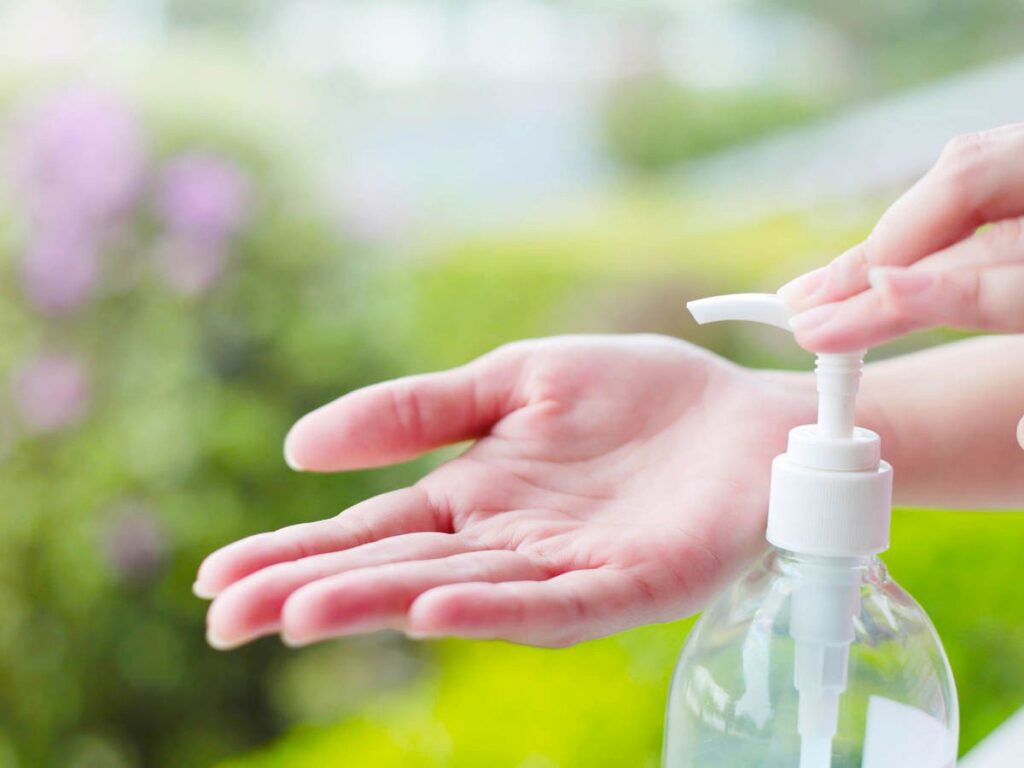
The importance of sanitization has become more evident in recent years, especially during the COVID-19 pandemic. Sanitizers are now an integral part of our daily lives because they help to lower the risk of infection from harmful bacteria and microorganisms. In this article, we will discuss the purpose of sanitizers, how they work, and their different types.
What is a sanitizer? – Sanitizer is a chemical agent that is used to decrease the number of harmful microorganisms that are present on objects or surfaces to a safe level. Sanitizers work by either killing the microorganisms or slowing their growth. They are widely used in hospitals, food processing plants, and other areas where the risks of contamination are significant. They are available in many forms, including sprays, gels, wipes, and foams.
How do sanitizers work?
Sanitizers work by causing damage to the outer membrane or cell wall of microorganisms which can lead to their destruction. The exact mechanism behind their action is different based on the type of sanitizer and the targeted microorganisms. The most commonly used sanitizers are alcohol-based and chlorine-based sanitizers.
– Alcohol-based sanitizers:
Alcohol-based sanitizers are by far the most popular kind of sanitizer. They work by denaturing the proteins and destroying the lipid membranes of microorganisms, which can lead to their destruction. Alcohol-based sanitizers work against various microorganisms like viruses, bacteria, and fungi.
Alcohol-based sanitizers usually contain 60{fec984d2719dfb0eb1c56d1f99f0555e6332b5143df3cad6b055001e82081c20} to 95{fec984d2719dfb0eb1c56d1f99f0555e6332b5143df3cad6b055001e82081c20} ethanol or isopropanol. The higher the percentage of alcohol, the better the sanitizer’s ability to kill microorganisms. However, high concentrations of alcohol can also be irritating to the skin. This is why most sanitizers have additional ingredients, like aloe vera or glycerin, to help moisturize and soothe the skin.
– Chlorine-based sanitizers:
Chlorine-based sanitizers are another common type of sanitizer. They contain chlorine as the active ingredient. The chlorine-based sanitizers release chlorine gas that reacts with water to create hypochlorous acid. Hypochlorous acid is a powerful disinfectant that kills a wide variety of microorganisms.
Other types of sanitizers:
There are different kinds of sanitizers that are less popular but still have their uses. These includes:
- Quaternary ammonium compounds (Quats): These are disinfectants typically used in food processing plants, healthcare facilities, and other places. They’re effective against many microorganisms and have a long-lasting impact.
- Hydrogen peroxide: Hydrogen Peroxide is a potent oxidizing agent that kills a wide variety of microorganisms. It is widely used in hospitals, food processing plants, and other environments.
- Iodine: Iodine is a powerful disinfectant that can kill a variety of microorganisms. It is often used in healthcare settings and other places.
- Peroxyacetic acid: Peroxyacetic acid is another powerful disinfectant that can kill many microorganisms.
Why are sanitizers necessary?
Sanitizers are crucial for many reasons, such as:
- Preventing the spread of diseases: Sanitizers are vital in preventing the spread of disease. They help to reduce the risk of getting infections and illnesses. In healthcare settings, sanitization is crucial to prevent the spread of diseases from one patient to another. In public spaces like offices and schools, sanitization helps to reduce the risk of illness among visitors and employees.
- Kills Germs: One of the primary purposes of sanitizers is to remove germs from our hands. Germs are everywhere, and we come in contact with them through various surfaces and objects. Sanitizers help in reducing the number of germs we carry on our hands which helps to prevent the spread of diseases.
- Convenience: They are simple to use and carry. They come in small bottles that you can easily carry in your purse or pocket. This makes them an ideal alternative for people who are constantly travelling and don’t have access to soap or water.
- Maintains Hygiene: Good hygiene is vital to maintain good health. Using sanitizers regularly helps to maintain hygiene and make sure our hands are fresh and free of germs.
- Accessible: Sanitizers are easily accessible and can be found in most pharmacies and stores. They’re also available in a variety of forms, making it easier to find the best one for your requirements.
- Safe: Sanitizers are safe to use, provided that they are used correctly. They aren’t harmful to the skin and don’t cause any damage. It is, however, essential to choose a sanitizer that contains atleast 60{fec984d2719dfb0eb1c56d1f99f0555e6332b5143df3cad6b055001e82081c20} alcohol and follow the instructions for use.
What is the Importance of sanitation
- Reducing the Risk of Infection:
Sanitizers are effective in killing bacteria and germs, which reduces the risk of infection. This is especially important during the COVID-19 pandemic, where maintaining personal hygiene is essential in preventing the spread of the virus.
- Portability:
Sanitizers are available in a variety of forms and sizes, which makes them portable and easy to carry around. This is particularly helpful when water and soap aren’t readily available, for instance, when travelling or commuting.
- Cost-Effective:
Sanitizers are cost-effective compared to other cleaning methods, making them an affordable option for maintaining hygiene and cleanliness.
Precautions and Safety Measures
Sanitizers have many advantages, but it is important to be aware of the necessary precautions and measures to make sure you use them properly. Here are some guidelines and safety precautions to keep in mind:
- Use sanitizers only on surfaces and skin: Sanitizers should only be used on the skin or surfaces and not be consumed. Ingesting sanitizers can be dangerous and can lead to alcohol poisoning.
- Keep sanitizers out of reach of children: Sanitizers should be kept out of reach of children as they can be harmful if ingested. Children may mistake sanitizers for food items, which is why it is important to keep them in a safe place.
- Avoid using sanitizers on open wounds: Sanitizers should not be applied to open wounds as they may cause irritation and stinging.
- Follow the manufacturer’s guidelines: It is essential to apply sanitizers properly and follow the manufacturer’s instructions for the best results. This means using the right amount, rubbing it thoroughly and allowing it to dry before touching any object.
- Don’t use it on oily or dirty hands: Sanitizers aren’t effective on dirty or oily hands, and therefore it is vital to wash your hands with soap and water before applying a hand sanitizer.
- Avoid using sanitizers with fragrances or dyes: Sanitizers containing dyes or fragrances may trigger skin irritation or allergic reactions, so it is recommended to use unscented and dye-free sanitizers.
Conclusion
Sanitizers have become a crucial part of our daily lives, particularly during the COVID-19 pandemic. They help to maintain personal hygiene and cleanliness and reduce the risk of infection. Alcohol-based sanitizers are the most effective in eliminating bacteria and germs, while non-alcohol-based sanitizers are ideal when alcohol-based sanitizers aren’t feasible. It is crucial to take the necessary precautions and security measures while using sanitizers to ensure their proper use. With the right use and care, sanitizers can help us stay safe and healthy.
